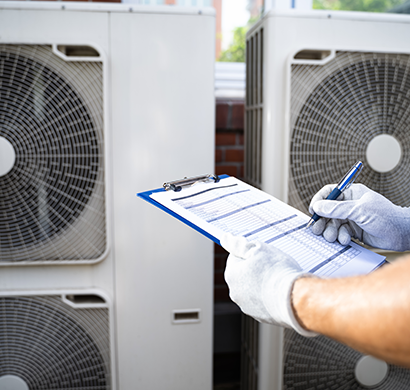An air conditioning (AC) system is a complex machine with several key components working together to cool your home. Understanding these components can help you maintain your system and identify potential issues needing repair. Here’s a breakdown of an AC system’s main components and functions.

1. Thermostat
The thermostat is the control center of your air conditioning system. It senses the indoor temperature and signals the AC unit to turn on or off to maintain the desired temperature. Modern thermostats can be programmable or smart, allowing for greater control and energy efficiency.
2. Evaporator Coil
The evaporator coil is located inside the indoor unit of the air conditioner. It contains refrigerant, which absorbs heat from the indoor air. As the warm air passes over the cold evaporator coil, the refrigerant evaporates, removing heat and cooling the air before it is circulated back into the room.
3. Condenser Coil
The condenser coil is located in the outdoor unit of the AC system. After the refrigerant absorbs heat indoors, it travels to the condenser coil, where it releases the absorbed heat to the outside air. This process causes the refrigerant to condense back into a liquid state, ready to absorb more heat from inside the home.
4. Compressor
The compressor is the heart of the AC system. It is responsible for pumping the refrigerant between the evaporator and condenser coils. The compressor increases the pressure and temperature of the refrigerant gas before it enters the condenser coil, facilitating the heat exchange process.
5. Refrigerant
Refrigerant is the chemical compound that circulates through the AC system, absorbing and releasing heat as it changes states between liquid and gas. Common refrigerants include R-22 (Freon) and R-410A (Puron), with newer systems often using more environmentally friendly options like R-32.
6. Expansion Valve
The expansion valve is a crucial component that regulates the flow of refrigerant into the evaporator coil. By reducing the pressure of the refrigerant, the expansion valve allows it to expand and cool before entering the evaporator coil, enhancing the cooling efficiency of the system.
7. Air Handler and Blower
The air handler contains the blower and other components that move air through the ductwork. The blower fan pushes cooled air from the evaporator coil into the ductwork, distributing it throughout the home. It also draws warm air back to the evaporator coil to be cooled again.
8. Ductwork
Ductwork is a network of tubes that distribute cooled air from the air handler to different rooms in the home and return warm air to the evaporator coil. Properly sealed and insulated ductwork is essential for maintaining efficiency and consistent indoor temperatures.
9. Air Filter
The air filter traps dust, dirt, and other particles from the air before it enters the evaporator coil. Regularly replacing or cleaning the air filter is crucial for maintaining airflow, preventing the evaporator coil from getting dirty, and ensuring efficient system operation.
10. Drainage System
The drainage system removes the condensation that forms on the evaporator coil. A clogged drain can lead to water damage and decreased system efficiency. Regular maintenance includes checking and cleaning the drain line to prevent blockages.
Let ABA Heating & Cooling Help If You Have Issues
Each component of an air conditioning system plays a vital role in maintaining comfortable indoor temperatures. Regular maintenance and understanding how these parts work together can help you troubleshoot issues and keep your system running efficiently. For any repairs or detailed maintenance, always consult with a certified HVAC technician to ensure proper handling and safety.
Call us now at 512-687-1463. Our knowledgeable and experienced technicians can quickly diagnose the issue and provide an effective solution to restore your comfort.

